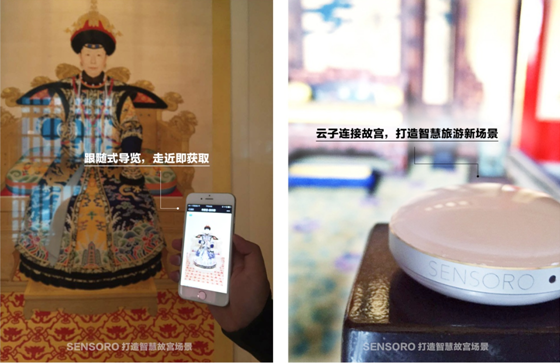In July, 2015, Google launched Eddystone TM, an open beacon format that supports Android and iOS devices and is expected to bring about significant advances in beacon device application. On April 14, Google released the technical specifications for EID, a new frame type for Eddystone to enable a more secure beacon signal. SENSORO, an Eddystone manufacturer, simultaneously provided technical support for Eddystone-EID.
SENSORO has achieved numerous benchmarks in proximity marketing at airports, restaurants, retail shops, museums, tourist destinations, transportation vehicles and other public venues.
Even before Google-EID, SENSORO had cooperated with the Palace Museum on developing smart tourism. By this May Day visitors will be able to follow a guide that provides exhibit information through low energy sensors located in the Forbidden City.

The sensors are able to read temperature, speed and light, and even forecast urban disasters. They can communicate this information to a smartphone through an App, which will offer better service to the smart cities of the future. SENSORO plans to launch a IoT base station to create an independent low energy wide area network in the first half of this year. All the smart sensors will be able to exchange information through this network and then collect and analyze them using cloud technology, a revolution in the pattern of IoT.
With several major technology brands, including Google, Apple and Microsoft, and China’s businesses as well finally bringing their IoT systems to the public this year, the pace of smart city development is picking up, and the fantastic smart life in science fiction films is probably just months away.
Founded in 2013, SENSORO was one of the first companies in the world to research Bluetooth low energy smart sensors and to internationalize the technology. Currently, SENSORO has clients from 51 countries and regions.